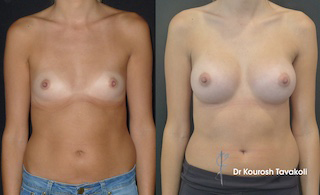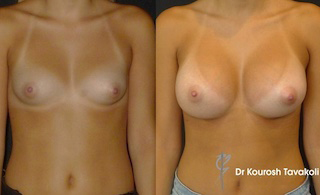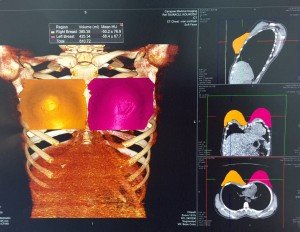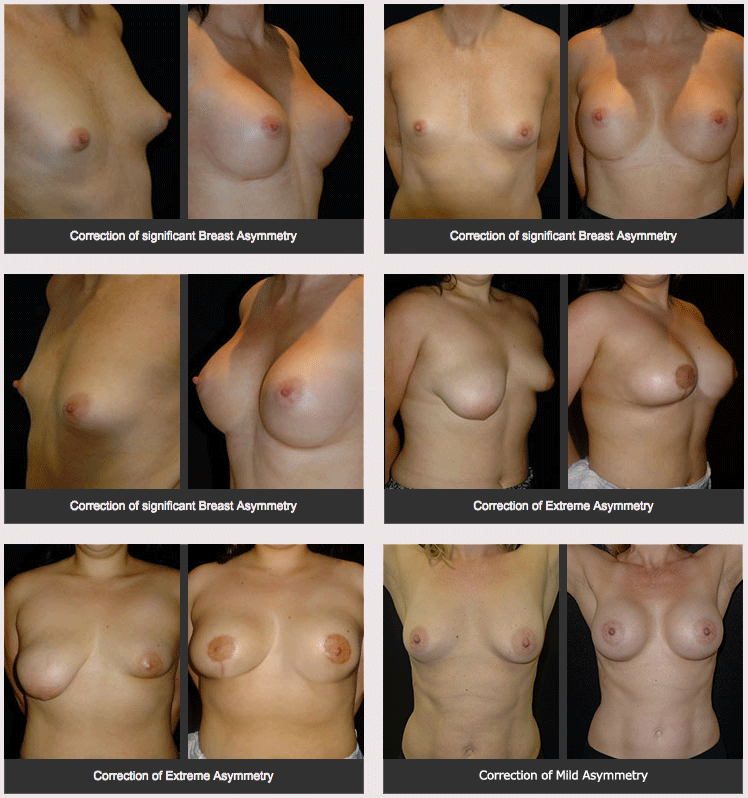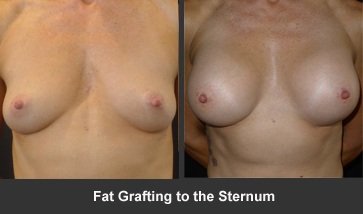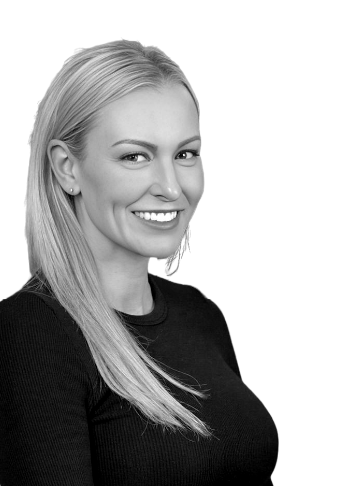Breast Augmentation Sydney
Australia’s specialist plastic surgeon with experience in:
- Breast Augmentation Mammoplasty & Recovery Technique
- Complicated Breast Revision Surgery & Internal Bra System
- Tuberous Breasts & Breast Asymmetry Corrections
- Comprehensive Understanding in Fat Grafting Technique
DR TAVAKOLI’S PHILOSOPHY ON BREAST AUGMENTATION MAMMOPLASTY
With particular knowledge and experience in breast augmentation mammoplasty, patients travel interstate to undergo surgery with Dr. Tavakoli. With over 10,000 breast implant surgery procedures performed, Dr. Tavakoli’s applies his experience to help patients.
Researching the plastic surgeons in Sydney can be a timely process before women choose to undergo breast augmentation mammoplasty surgery. Dr Tavakoli and his team provide support throughout the surgical journey. Whatever your reasons are for considering breast implant surgery in Sydney, Dr. Tavakoli works with you to understand your desires and expectations.
Dr. Tavakoli has sound knowledge in treating breast ptosis or tuberous breast shapes. These conditions may require complex mastopexy procedures in order to provide the desired results.
Breast sizing is an integral part of Dr. Tavakoli’s consultation methodology. Precise sizing will take place in the consultation rooms throughout your pre-operative process. Dr. Tavakoli exclusively offers intra-operative (during surgery) implant sizing to ensure all patients receive the most suitable implant for each individual’s body. This method of sizing eliminates human error in the consulting room which does not take into account the skin’s ability to expand plus chest wall-rib curvature. As a result, Dr. Tavakoli’s re-augmentation mammoplasty rate for upsizing patients is very low.
Disclaimer: The outcomes shown are only relevant for this patient and do not necessarily reflect the results other patients may experience, as results may vary due to many factors including the individual’s genetics, diet and exercise.
Before & After Gallery
WHICH BREAST SHAPE DO YOU MOST CLOSELY RELATE TO?
Dr Tavakoli has come up with the six following broad categories of patients seeking Breast augmentation mammoplasty in Australia. Most breast patients will generally fall into one of the categories:
1. Tight Skin, Poor Shape & Small Breasts (most common patient)
2. Good Skin, Good Shape & Small Breasts
3. Good Skin, Good Shape & Moderate Breasts
4. Tight Skin and Tuberous shaped (Grades 1-4)
5. Poor Skin, Good Shape (Weight Loss &/or Post-Pregnancy)
6. Poor Skin, Poor Shape (Weight Loss &/or Post-Pregnancy)
Essential clinical parameters
There are six main clinical parameters for breast implants on initial consultation:
1. Patient’s body build and height
2. Patient’s own breast size, shape, and symmetry
3. Nipple position in relation to the breast mound
4. The quality of breast skin (thickness & stretch marks)
5. Chest wall shape and dimension (Hollowed vs Pigeon Chest walls)
6. Patient’s desire for new cup size: Under-proportion, In-proportion or Over-proportion breast augmentation mammoplasty
After establishing the crucial parameters in the clinical examination, the process of understanding the most suitable breast augmentation mammoplasty begins.
YOUR CONSULTATION WITH DR TAVAKOLI
An obligation and cost-free consultation will be necessary prior to your procedure, to discuss your goals and develop the best treatment plan for you to achieve the results you want.
During your consultation, your surgeon will explain the surgical techniques involved in breast augmentation mammoplasty, as well as any potential risks and complications associated with the procedure. The consultation is an opportunity for you to ask questions and discuss any concerns that you may have, and to make an informed decision about whether or not to proceed with the surgery.
You will also be provided with preparation and aftercare instructions, and thorough advice you can follow to ensure the best results and prevent complications.
Dr Tavakoli approaches his breast augmentation mammoplasty, postpartum surgery, and other procedures with a focus on individual care and patient support. With experience in multiple techniques, he can combine them to provide individual results to his patients. With extensive experience in multiple techniques, he can combine them to deliver specific results for his patients.
The Breast Implant Surgery Process
Overview of what to expect
- Careful mapping
- Minimal incision
- Meticulous dissection in bloodless field
- Patented spray to stop blood ooze and minimise capsular contracture. Surgical drains no longer needed
- Multiple intra-operative sizing to get the correct shape and size
- Invisible sutures
- Limited use of surgical bra
- Neck exercises, day one onwards
- Return to work, day five to seven
- Return to gym, day 21
Breast implant shapes
Dr Tavakoli has a rigorous protocol for choosing which shaped implants. He has extensive experience in both shapes and has no personal preference as long as it fits the patients breast template. The choice of breast implants varies from round to teardrop (anatomical (teardrop)) shapes. Both the round and teardrop breast implants come in both low and high-profile varieties. The shape variation is in the width and projection of the breast implants for any given size.
In the round range, there are five profiles or projections:
– Low Profile
– Medium or Moderate Profile
– High Profile
– Extra High Profile
– Ultra High Profile
In the anatomical (teardrop) range, there are three main bases and five profiles (projections) like above:
– Short Oval Base
– Long Oval Base
– Round Base
The spectrum of breast implants available to the surgeon can therefore provide much greater versatility in achieving a more natural look. The majority (60%) of patients in Dr Tavakoli’s practice elect to have anatomical (teardrop)/Tear drop shaped.
Since Dr Tavakoli prefer’s placing the implant in a submuscular pocket in most patients, implant edge visibility in the upper pole of the breast can be avoided even in the round implants.
The round implant tends to be ideal for those patients with well-shaped natural breasts who desire a straightforward enlargement in all dimensions but specially in the upper pole.
Use of the teardrop (anatomical (teardrop)) shape depends on the patient’s desire, as well as her breast shape. In general, there are two groups of women who elect teardrop-shaped breast implants. It can be a suitable choice for women who have mild ptosis and/or tuberous breasts. Mild elevation of the nipple in relation to the breast mound can be achieved without the need for extra scars on the actual breast (unlike breast mastopexy scars). In these cases, the implants may be inserted in a subglandular or subfascial pocket (under the breast tissue) or Dual Plane Submuscular Pocket.
In moderate to severe cases, breast mastopexy must be performed at the same time as breast augmentation mammoplasty in order to alter aesthetic shape. Please read the section on this website on Breast Lift (mastopexy) procedures if you suffer from breast ptosis. Patients that undergo a Breast Lift (mastopexy) and go to a surgeon that uses large Implants instead of performing mastopexy surgery will end up with enlarged and lax breasts that may cause a lot of neck and back pain.
Secondly, some patients specifically want less fullness in the upper quadrant. Teardrop breast implants offer a gentle slope in the upper pole region.
Breast implant size
Breast implant size is one of the most important decisions in breast implant surgery. Because of this, your surgeon will take several approaches to help the patient make the best decision based on their anatomy, personal preferences and the appearance they wish to achieve. In general, breast augmentation mammoplasty should be in proportion or slightly out of proportion to the woman’s overall body shape.
In a recent survey, over 50% of patients undergoing breast augmentation mammoplasty stated an average to full C-cup was their desired postoperative goal. D-cup was the second most popular request at 35%. Small C-cup is the third most common followed by full-D and Double D cups.
The final size of breast implants is a complex function of the elasticity of a patient’s skin envelope, chest wall diameter and implant dimensions but most importantly preexisting breast volume.
For these reasons, Dr Tavakoli always begins by showing the patient numerous photos of actual patients who have had breast augmentation mammoplasty surgery – before and after breast implants photos. By finding someone who has a similar preoperative appearance and evaluating their results with the size of implant they chose, the patient can then get an idea of her own final result and increase or decrease the implant size according to her wishes.
Dr Tavakoli will also measure the patient’s breast and chest shape, paying particular attention to the base and projection of the breasts. This gives me an idea of what size breast augmentation mammoplasty will help achieve the patient’s desired size postoperatively.
As breast size increases, so does the diameter of the breast implants. In most cases, there is an implant that will be a suitable match for the diameter of the patient’s natural breast tissue, and I find this is a good starting point for discussion.
Choosing breast implants smaller than the patient’s natural breast shape will not provide the proper cleavage and shape following the procedure. Similarly, choosing breast implants too large for the patient’s natural chest shape is more likely to give an unnatural appearance. It is noteworthy that very large implants can create more issues and future complications such as stretch marks, implant migration and symmastia.
Unfortunately, breast implants do not come in cup sizes. Rather, they are categorized by the volume of gel that they are designed to hold. There are several reasons for this. First, the final cup size will be partially determined by the preoperative breast size, and every patient is different in this regard. Second, a C-cup from one bra manufacturer is not necessarily the same as a C-cup from another manufacturer.
Although every woman is built differently and bras are not manufactured to a set standard, it can be expected that a B-cup implant size is approximately 250g (cc) and a C-cup is 330cc in a woman of average height and average build. That number will be higher if the woman is tall or has broad shoulders. Similarly, if the patient is shorter than average or has a narrower chest, that number can be expected to be slightly lower. Although a desire for a certain cup size is helpful in guiding the patient in the selection of the proper breast implants, I find it is more helpful to focus on the desired shape and appearance that patient wishes to achieve.
Breast implant positioning
Behind the Muscle or Over the Muscle
The next consideration is where to place the breast implant – on top of or behind the muscle. In general, I prefer to place breast implants behind the muscle so that they are partially covered. I find the pectoralis muscle allows a smooth takeoff from the chest wall. If put directly on top of the muscle, the breasts can look like rounded balls on the chest which is a definite give-away. It is also my opinion that placing the implant under the muscle will, in the long run, have an impact on breast laxity. Also for older women that need breast cancer screening, it seems that behind the muscle placement is superior from a mammogram and ultrasound imaging point of view. A further advantage of the submuscular pocket is a lower rate of capsular contracture.
But it is not all perfect with the submuscular placement of implants. The negatives of the submuscular pocket is that it may create “winking” on animation or flexing of the pectoralis muscle. Implant migration and displacement is also more likely in this pocket.
Dual-Plane Technique
In women with mild ptotic breasts, I use the dual-pocket technique of dissecting both on top of and underneath the pectoral muscle (50% over and 50% under the muscle), but inserting the breast implant behind the muscle.
In rare cases of moderate ptotic breasts where the patient does not wish to undergo a breast lift (mastopexy) procedure for fear of scaring, I will consider placement of the implant on top of the muscle. This pocket is referred to in the plastic surgery literature as subglandular or subfascial .
Generally speaking, it displays excellent short-term benefits but in my opinion far less long-term advantages compared to the submuscular or subpectoral pocket placement. Having said this please note that most types of constricted or Tuberous breast corrections are done with implants in the Subglandular or Subfascial pocket as the risks of “Double-Bubble” is considerably higher in Tuberous breasts.
Coating material
This issue of different coatings is controversial. Implant surfaces can generally be Smooth, Textured or Polyurethane. The reason for the differing implant surfaces is one day there can be the “perfect” implant with a low capsular contracture rate and yet feels very soft and natural. No matter what the coating on the outside of the implants is, the inside material of all the implants are still silicone gel or Saline (salt water). The research in implant technology is ongoing and new advances are continuously emerging.
Smooth implants generally gives a softer feel in many cases, particularly in thinner patients, but the downside is that the patient needs to massage the implants for at least 6 months to help prevent capsular hardening. The rate of hardening with smooth implants is 10-15%. Please note that implant migration is also higher with smooth implants.
Polyurethane coated implants from the manufacturer Silimed (Brazilian made Furry) or Polytech (German made Microthane) are proving to be very effective in treatment of capsular contracture although in my experience they show 3% rate of contracture and NOT 1% alleged by the marketing material. Currently I prefer to use these implants in some selected primary cases and all revisional cases of capsular contracture. Please note that the Polyurethane coated Implant also has silicone gel in the centre of the implant and has been TGA product approved for only two years here in Australia. Please note that Polyurethane implants are not risk free and feel much firmer than both smooth and textured implants although they do soften up after nine to 12 months. It is certainly correct that in the anatomical (teardrop) range Polyurethane implants have an almost zero rotation rate.
Generally speaking, textured or rough surface implants are said to reduce the rate of capsular hardening or contracture and have a lower rate of pocket migration, but they are also known to create more wrinkling or rippling issues later on in particular if patients lose a lot of weight. This wrinkling is normally felt in the lower edge of the breast where the implant is closest to the skin surface. My recommendation based on 10,000 Implant cases is to use textured implants in most patients and especially for extremely fit athletic girls who may shift the implant pocket due to overexertion. They are very reliable and have been around for 30 years and represent in my opinion the lowest re-operation rate. Textured implants also have a much lower rate of capsular contracture than smooth implants. Going forward polyurethane coated implants are a viable alternative to textured implants but the plastic surgery fraternity needs more time in order to fully study and understand them. Just remember that heavy marketing push and chit chat on the blogosphere cannot replace experience and clinical trials.
I do not believe any surgeon can use just one type of implant material. An experienced surgeon will not only use all different types of breast implants depending on the patient requirements but will also not commit to one implant manufacturer.
Fill material
I almost always use the cohesive silicone implants and rarely the saline-filled breast implants. The new generation silicone-gel breast implant is very reliable and generally feels and looks more like a natural breast.
Most breast augmentation mammoplasty operations in Australia are performed with silicone-gel breast implants (98%). In December 2006, the United States Food and Drug Administration approved the use of gel implants in the US market. The decision was based on a great amount of scientific research into the reliability of silicone implants. As a result the use of gel implants worldwide is 90%.
The gel usually comes in low and high cohesiveness (soft touch or firm touch), and you should ask your plastic surgeon for different samples at the time of the consultation so that you can make the most informed choice possible. Generally speaking the firmer gel implants are form responsive like the gel found in the tear-drop implants. The round implants can be soft (80% fill) or firm (100% fill) depending on the manufacturer.
Saline implants were popular in the 1990s as they were made from salt water and they promised to revolutionise breast augmentation mammoplasty surgery. However because of the fact that they felt very unnatural to touch, rippled heavily as water has a different density to breast tissue and they almost all ruptured needing replacement at the seven year mark the saline implants are no longer used except by a few older surgeons.
BREAST AUGMENTATION MAMMOPLASTY COST IN SYDNEY
The cost of a breast augmentation mammoplasty in Sydney depends on your specific needs. Every cosmetic surgery begins with an initial consultation with your chosen surgeon to assess if you are a suitable candidate for breast enlargement surgery and determine the best way to achieve the results you want.
We provide detailed assessments during your consultation to determine the best treatment approach and ensure that you are happy with the goals of the procedure.
Always choose an appropriately qualified health practitioner when it comes to breast surgery to ensure an effective procedure and get the results that you desire.
An accurate quote for the surgery can only be given after a one-on-one consultation with Dr Tavakoli and his team, where we will assess the work required and create a plan for the procedure. The costs of the procedure include costs of the surgical team, an anaesthetist, modern silicone implants, use of the theatre, after-assessments, and any necessary aftercare materials. Your initial consultation is free, both of charge and obligation. Compared to older saline implants, contemporary silicone implants are typically pricier but generally yield a better outcome for the patient. Since these implants are intended to be long-lasting devices, their cost should be taken into account when calculating the overall expense of the surgery. Often, it is this supplementary cost that causes breast augmentation mammoplasty to be slightly more costly than other procedures.
The fees for the surgeon and assistant surgeon make up a significant portion of the total cost, and the anaesthetist fee is dependent on the length of the procedure.
RECOVERY AND AFTERCARE
Breast augmentation mammoplasty surgery recovery is a simple process. After the breast augmentation mammoplasty with implants, there will be mild discomfort and swelling. Dr Tavakoli uses drains for 24 hours in order to reduce the rate of bruising and swelling. Your new breasts will gradually feel less swollen as your breast tissue heals.
The swelling usually settles in about two to three weeks. Sometimes swelling may be slightly different between the two sides. This is normal and settles with time. However if a great difference develops between the two sides then you must contact us for advice.
Following a breast augmentation mammoplasty, the breasts may appear to be placed quite high up. This is also normal. During the first two months postoperatively the breast implants will gradually lower and settle from the effects of gravity. Do not be alarmed if one side settles quicker than the other, as this sometimes occurs.
There will be a small but well-concealed scar under each breast. Over time, the scar will fade and blend with your skin tone as the stitches dissolve.
Following the operation you will have a light dressing in place which will need to be kept dry until your follow-up appointment. At this time the surgical wounds are inspected and lightly cleaned. Always remember to read and follow the postoperative instructions that will be given to you by your surgeon.
You will be asked to rest and tone down your activities for at least five to seven days. This will give time for your body to recover and heal the breast tissue and chest muscle.
Resuming your exercise routine
You should plan to avoid activities which require much raising of the arms above the level of the head for 10 days after surgery. With great care, you can drive about 10 days after surgery. Patients can usually return to work in seven days unless their occupation requires particularly strenuous movements and lifting. In such cases, two to three weeks should be allowed.
- Neck and arm stretches may begin immediately
- Walking can commence within seven days
- Light jogging within three weeks
- Gym and Pilates after four to six weeks
- Upper body weights six to nine weeks
- Contact sports / Martial arts/ Boxing / Soccer after 12 weeks
PROCEDURE RISKS AND COMPLICATIONS
The level of risks and complications associated with breast augmentation mammoplasty procedures can vary depending on the details of the highly personalised procedure, such as the implant shape, texture or position. Before your procedure, we will discuss the risks of your surgery, and how to prevent side effects. Check back to the recovery and aftercare section to read about how to slowly resume your exercise routine to give your body sufficient time to heal.
At my clinic, we put numerous measures in place to minimise risks as much as possible. This includes ensuring a sterile environment, choosing the best procedure options for you, and using advanced surgical techniques.
Risks and complications can include:
– Infection: As with any surgical procedure, there is a risk of infection. This risk can be higher in breast augmentation surgery because of the presence of breast implants. The infection can occur at the incision site or around the implant.
– Capsular contracture: Capsular contracture is the formation of scar tissue around the breast implant, which can cause the breast to feel hard and unnatural.
– Implant rupture or leakage: Breast implants can rupture or leak, which can cause pain, discomfort, or changes in breast shape or size.
– Hematoma: Hematoma is a collection of blood that forms around the implant. This can cause swelling, pain, and discomfort.
– Seroma: Seroma is a collection of fluid that forms around the implant, causing swelling, pain, and discomfort.
– Nipple sensation changes: Breast augmentation surgery can cause changes in nipple sensation, which may result in increased sensitivity or decreased sensation.
– Scarring: Breast augmentation surgery involves incisions, which can result in scarring. The extent of scarring will depend on the incision technique used and the individual’s healing process. We use the most advanced scar-minimisation techniques during breast procedures, so we will minimise this risk as much as possible.
– Anaesthesia risks: Breast augmentation surgery is performed under general anaesthesia, which carries risks associated with anaesthesia.
– Unsatisfactory results: Despite the best efforts of the surgeon, breast augmentation surgery may not result in the patient’s desired outcome, but this can be prevented by coming to a clear mutual understanding of the goals of the procedure during a thorough consultation.
Any surgical or invasive procedure carries risks. Read more here
Breast Augmentation Mammoplasty FAQ’s
A well-augmented breast has fullness and a soft sloping upper pole. There should not be webbing between the breasts and only a certain amount of elevation.
There are three main signs of overdone breast augmentation mammoplasties:
1. Breast implant margin: This should be soft and imperceptible;
2. Elevation: An augmented breast that is too elevated will tend to look fake; as a small amount of downward sloping is more subtle. When a patient lies on her back, the breast implants should roll to the side like natural breast tissue and not sit up like rigid peaks.
3. Breast implants size: An implant that is too large for a small frame is usually an obvious indication that a patient has had a breast augmentation mammoplasty surgery.
NOTE: Women wanting to go from an A cup to a full D cup need to have an understanding of skin quality and restrictions. i.e – collagen loss, laxity, weight loss and/or pregnancy.
There are three choices about where to make the skin incisions for breast augmentation mammoplasty surgery. They can be in the breast fold (inframammary), around the nipple (periareolar) or underneath the armpit (transaxillary). These incisions can all produce scarring ranging from excellent to poor. Although patients may voice some initial concerns about the location of their scars, they are ultimately far more concerned with the final shape and size of their breasts. In fact the rate of scar revision for unsatisfactory scarring in Breast Augmentation Mammoplasty is less than 0.05%.
Generally, a majority of patients in my practice opt for the inframammary incision (breast fold). I also find this incision has the least amount of interference with breastfeeding and nipple sensation and it generally heals well.
I find the periareolar incision particularly useful in some Asian and African patients with higher risk of keloid scarring but the nipple-areola must be at least 4.0 cm in diameter. Furthermore, the periareolar incision also allows one to perform the full Benelli mastopexy or nipple lift where this may be indicated in mildly ptotic breasts.
Transaxillary (armpit) incision carries high risk of cleavage problems (too much gap) and is reserved for a few select patients with small chest wall. The transumbilical (belly button) incision popularised by the Fox reality show Dr 90210, is ONLY reserved for the use of saline implants. As I am not a huge fan of breast augmentation mammoplasty with saline implants due to extremely high risk of problematic “rippling”. I do not personally favour the “belly button” incision.
Should you become pregnant following your operation then your existing breast tissue will be subjected to the normal hormonal influences of this period and therefore your breast will enlarge and the skin will stretch accordingly. Likewise, once the pregnancy and any associated breastfeeding ceases, your breast tissue will then shrink down. Some women will have ptosis or deflated breasts. It is impossible to predict to what degree these changes will occur; however, the breast implant volume will remain the same throughout these.
Breastfeeding is certainly possible when implant is placed behind the muscle and the implant is not inserted through the nipple-areolar complex. Whether placement of implant behind breast tissue (in front of the muscle) has bearing on breast feeding is still debatable. Prolonged breast feeding, however, will create possibility of stretch marks on the breasts and certainly accelerate breast ptosis which may or may not require surgical correction.
A general anaesthetic is used when the breast implant is placed under the pectoral muscle. Dr Tavakoli works with a group of registered anaesthetists that perform both general and “twilight-sedation” anaesthesia. Dr Tavakoli only operates at fully accredited operating facilities where the administration of both types of anaesthesia is permitted.
General anaesthesia provides the best operating conditions for breast augmentation mammoplasty surgery. In order to perform this surgery properly muscles in the patient’s body have to be fully relaxed and most importantly the patient must be completely still. These conditions cannot be achieved under sedation or “twilight sedation”.
Surgery under sedation is uncomfortable and often painful. Under sedation patients may still be awake, but may not remember things. Any unexpected movement that the patient makes under sedation may be dangerous.
The lifespan of breast implants depends on the quality of the procedure and the implant itself. In today’s standard, breast implants are well-manufactured and highly durable, resulting in higher reliability and lesser risk of complications such as capsular contracture or rupture than in the past.
A breast augmenation mammoplasty, in general, can last for well over 10 years without needing another surgery or removal. However, different factors may influence the quality of your breast surgery, such as unexpected trauma or injury to the chest muscle. In addition, ageing can also affect breast size or breast volume. Hence you may need to follow up with your doctor yearly for a consultation.
If you are unhappy with the implant augmentation mammoplasty results or have changed your mind over the years, you can always have breast revision surgery. You can always choose new sizes and shapes for your new breast implants.
Have a question?
Then why not book a free consultation with one of our friendly female staff members?
"*" indicates required fields
Or Call us on 1300 368 107
“As a plastic surgeon operating exclusively on the breast and body, including breast augmentation (mammoplasty) and breast lifting (mastopexy), I have been privileged to treat a large number of patients over multiple locations. Breast augmentation mammoplasty is a procedure that is often assumed to be ‘simple’ in nature but is actually quite complex. Precise pre-planning and meticulous surgery are essential in obtaining the patient’s desired results. Quality aftercare simply cannot be ignored; hence one of the main problems with travelling overseas for surgery with no follow up.”
Additional Breast Procedures offered by Dr Tavakoli Fracs
In certain women, simple breast augmentation (mammoplasty) may not produce the desired result. In these cases extra procedures can be undertaken by Dr Tavakoli in order to correct simple problems at the time of breast augmentation (mammoplasty). These conditions are detailed below:
Dr Tavakoli has developed a large practice specialising in Correction of Tuberous breasts deformities.
The Tuberous (snoopy or cone-shaped or constricted base) breast deformity is a rare entity affecting young women bilaterally or unilaterally. There are mild, moderate and severe grades of this condition. Women usually inherit this condition and when severe it can cause significant psychological issues.
The Tuberous deformity is characterised by a constricting ring of tissue at the base of the breast, which leads to deficient horizontal and vertical development of the breast with or without herniation of the breast tissue toward the nipple-areola complex and areola enlargement. Tuberous breasts are invariably asymmetrical in size in 90% of cases.
Interestingly enough pregnancy and rapid weight loss can convert Mildly tuberous breasts to Severely tuberous.
As you can imagine surgical correction is quite complex. The treatment in simple terms includes:
- Mild forms: Augmentation with Anatomical (teardrop) implants only
- Moderate & Severe forms: 3 procedures need to take place. Breast reduction and flap procedure to get an even breast thickness in ALL quadrants, Periareolar Breast Lift & Augmentation with anatomical (teardrop) implants. In some cases Fat Grafting may be needed at 6-12 months post-operatively to complete the transformation.
Medicare item numbers exist for this condition making correction of tuberous breast a reconstructive/corrective operation.
Click here to read the following CASE STUDY on this condition.
Click here to view Dr Tavakoli’s extensive Tuberous Correction Breast Gallery
The Von Heimburg classification describes 4 grades:
- Grade 1: hypoplasia lower medial quadrant
- Grade 2: hypoplasia of both lower quadrants with adequate areolar skin
- Grade 3: hypoplasia both lower quadrants with limited areolar skin
- Grade 4: hypoplasia of all quadrants
This is a very common problem (up to 80% of ALL women) as women seldom have identical breasts. Breast Asymmetry can be corrected in many ways. Implants can be used as well as Breast Lift procedures.
Dr Tavakoli uses different size implant for each breast in 25% of all his cases. Generally speaking Dr Tavakoli only corrects asymmetry of more than 1/4 cup size. Very slight breast asymmetry are recorded but best left untreated.
NB. Dr Tavakoli will advise if you need any extra procedures and explain the exact reason at the time of your initial consultation. The extra cost will also be discussed well in advance. Please note that only a properly specialised plastic surgeon can carry out these extra procedures combined with breast augmentation.
CT SCAN for asymmetry: Dr Tavakoli uses the latest technology when correcting high grade asymmetry. Prior to surgery you will have a CT scan of the breasts to measure the difference in volume or rib cage asymmetry. This allows Dr Tavakoli to select the correct implants and decide if Fat Grafting is required. All asymmetrical patients undergo intra-operative sizing by Dr Tavakoli.
Although mild cases of rib abnormalities are common in up to 25 % of my patients undergoing Breast Augmentation Surgery, more severe cases need special attention.
Pectus Excavatum is an abnormal development of the rib cage where the breastbone (sternum) caves in, resulting in a sunken chest wall deformity. Sometimes referred to as “funnel chest,” pectus excavatum is a deformity present at birth (congenital) that can be mild, moderate or severe. Pectus carinatum, also called “pigeon chest”, is a deformity of the chest characterized by a protrusion of the sternum and ribs.
There are many radical operative ways of treating this condition involving complicated and dangerous Thoracic Surgery to remodel the bone but I prefer to use breast implants in female patients to camouflage this condition as shown in the below case study of a 27 year old girl with severe pectus excavatum further complicated by breast ptosis (droopiness) after massive weight loss.
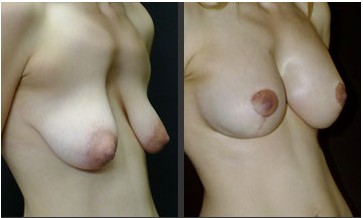
There are essentially 4 methods of breast lifting that I perform at the time of implant augmentation:
- Breast Augmentation for Slight droopyness
- Benelli (around areolar only) or Mini-breast lift for Mild Droopyness (ptosis) for very deflated breasts. Always with an implant
- Le Jour (lolly pop scar) or Major- breast lift for Moderate Droopyness (ptosis). Can be performed with or without implant
- Inverted T or Anchor Scar or Mega-breast lift for Severe Droopyness (ptosis)
A successful lift is determined not only by surgical technique; diagnosis and correct planning are equally as important.
Long “floppy” nipple condition usually occurs as a result of prolonged breast feeding. More commonly is seen in Asian patients. If not corrected the nipples can be quite obvious after breast augmentation as nipples can be seen protruding in tight T-shirts etc… Dr Tavakoli prefers to perform nipple operations in women who have finished with breast feeding duties.
An entire page has been devoted to Breast Revisional Surgery. Please click here to view it.
Dr Tavakoli has a large referral base of women with poor breast augmentation outcome from other centres in Australia and New Zealand. These terrible complications or undesired outcomes are very rare in experienced hands but no plastic surgeon in the world including Dr Tavakoli has a zero complication rate.
Unfortunately in great majority of revisional cases patients are psychologically affected and counselling is required to help patients through the corrective surgery. Dr Tavakoli ‘s team can organise counselling for patients undergoing corrective breast surgery.
Dr Tavakoli has a great deal of experience in correcting post breast augmentation complications. Most of these unsatisfactory outcomes occur as a result of poor patient selection and inadequate surgical skills to deal with a difficult breast condition but other problems can occur as a result of poor healing and scarring of the patient. Please note that the fees/cost for corrective surgery are higher than primary breast augmentation.
Please note that although complications are uncommon in Breast augmentation surgery they can happen around of 5-7% cases. Please read the list below before your consultation as good knowledge of the complications allows Dr Tavakoli to complete the consultation and the informed consent.
Please note that all complications are greater in smokers and those that return to full gym activity too soon after breast augmentation surgery.
Immediate
- Haematoma
- Infection
- Seroma
- Prolonged stiffness
- Poor wound healing (usually smokers)
Late
- Capsular hardening or Capsulization or Capsular Contracture or High riding implants
- Excessive wrinkling or rippling
- Excessive Cleavage Gap
- Symmastia or “Mono-Breast” or “Uni-Boob” or “Kissing Implants”
- “Double-Bubble” effect
- Implant rotation
- Bottoming Out
- Ruptured Implants
- Keloid scars
- Stretch marks
This is the most serious complication of breast augmentation. A capsule or capsule formation is a layer of scar tissue that normally forms around any artificial material placed in the body. It is important to realize that this is the natural response of the body to foreign material. Most times this capsule is so soft that it is virtually undetectable and therefore does not affect the breast implant in any way. Capsular contracture or hardening occurs when this layer of scar tissue shrinks around the breast implant, squeezing it so that it starts to feel firm, or in some cases, quite hard. Most capsular contractures experienced today stem from the smooth shell silicone breast implants placed some years ago. The capsule contracture rate in the past was 30-35% (in the 1980′s breast implants).
With the onset of textured shell breast implants, the problem of capsular contracture has been significantly reduced, now being between 5%.
The cause of capsular contracture is not totally clear, but seems to be multifactorial. It is important to realise that there are degrees of contracture and that the majority of women, who do develop this hardening, develop it only to a mild extent. In the minority however, it may be severe enough to be bothersome, even painful and may cause distortion of the breast. The condition may occur in one or both breasts and to a different degree either side.
It may develop any time, even years later although it is most likely to happen in the first 3 years after surgery. Unfortunately at this time there is no effective way to prevent capsular contracture if it is going to occur. However as mentioned previously, encapsulation is no longer the problem that it was. Having mentioned all the above, it is important to note that capsular contracture is not in itself a health risk other than its possible interference with mammography.
Are the prostheses safe? Can they cause cancer?
In Australia and Europe current sales figures show a distribution of 90% silicone, 10% saline. As modern silicone gel implants have been available since 1963, surgeons therefore have over 35 years of experience with these types of breast implants. This is more than any other type in use. Evolution has brought changes and improvements over the years with the introduction of textured surface envelopes made of newer formulations designed to minimise the “bleed” or diffusion of what is usually tiny amounts of the silicone oil fraction of the gel contents.
Fat Grafting to treat rippling and implant visibility is a common procedure. In women with small amount of breast tissue and body fat the implant can be felt more around the edges and in some cases the implant can become visual in the cleavage area and lower pole of the breasts.
To treat this Dr Tavakoli performs fat grafting. The fat is removed from the tummy or thigh region and gets prepared for injection into area of rippling; this gives coverage to the area and disguises rippling and implant visibility. This procedure can be done during or after breast augmentation.
43 yo female, nil pregnancies, deep hollow cleavage, minimal body fat, 380cc anatomical (teardrop) high profile textured silicone gel implants, dual plane pocket. Fat grafting to the sternum 15mls.

